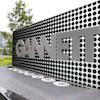The 19,600 employees of Gannett newspapers coming to work Monday will be working for a new company — untethered from growing and prosperous television stations and digital ventures.
Retaining the Gannett name, the spin off company has well defined plans for digital transformation and for expansion by acquisition. Its reception by Wall Street is less certain, but it is sweetening the case by promising a substantial dividend — 64 cents on shares trading around $15.
Gannett executives telegraphed the acquisition strategy in the company’s most recent earnings call and has since bought 11 titles in Texas and New Mexico, in which it already had a partial stake, from Digital First Media.
More is on the way, the company said in a presentation to investors last Monday. It will be targeting markets with 500,000 to 3,000,000 population and expects to make between $200 and $250 million in purchases each of the next several years.
To me this is a throwback, in modern digital dress, to the old Gannett of the 1970s, 80s, and 90s, when the company bought paper after paper, confident it could improve financial results and use the growing profits to fuel new rounds of acquisitions.
The formula will be partly the same, partly different in 2015 and beyond. Gannett still boasts of tough cost controls and will save money by transferring much of the design and editing functions of new titles to five centers. There should be opportunities to consolidate printing and business functions as well. Gannett has a common content management system that will extend to acquisitions.
And expansion is a particular match to Gannett’s strategy of using USA Today content as a separate supplement for the print editions of bigger papers (suggesting a reason for targeting of mid-sized to metro markets to buy).
Gannett says the enhanced content helps with subscription retention and frees local staff to concentrate on local news. Plus it has boosted USA Today distribution to more than four million copies daily, making a stronger case to national advertisers.
In advance of the spin, Gannett is well along with a digital-first makeover of its newsrooms, shuffling job titles and trading out some traditional print reporters and editors for those younger and more tech savvy. (Disclosure: Poynter has been hired to provide training in digital skills and leadership).
Gannett also continues to develop a digital marketing services arm, G/O Digital at its 92 outlets and will offer the same to local businesses as it acquires more.
New Gannett begins life with two clear challenges: Revenues, dragged down by weak print advertising, were off 9 percent in the first quarter, and the second quarter does not look much better. Results have been similar at NewsQuest, the group of regional British papers Gannett owns, which was hit by a work stoppage in recent weeks to protest cuts.
Another bump — after announcing USA Today publisher Larry Kramer, would become chief content officer of the new company, Gannett backtracked saying he decided instead to retire and become a director of the new company. That leaves CEO Bob Dickey searching for a replacement and further define what he means with a stated goal to “create one single nationwide news organization and publishing business under a single editor-in-chief.”
In an e-mail interview, Dickey wrote:
The local-to-national connection is a true differentiator for Gannett, and with award-winning examples like ‘Fugitives Next Door’ and our piece on cell phone spying, our track record already demonstrates our ability to activate across our 3000-plus editorial network.
The role of the local Gannett editor today is more important than ever. We want to use the USA TODAY Media Network to unlock their expertise, and empower them to make decisions based on their communities — which they know best.
He added:
We want someone who can drive this content powerhouse and lead us forward as one unified organization. No easy ask, but we’ve already got the award-winning journalists, deep connections in our communities, one of the most known and trusted national brands in USA TODAY and a unified, innovative culture. A great opportunity for the right talent.
Gannett has been able to syndicate the USA Today supplements to 12 non-Gannett papers, and Dickey told investors last week he expects to double that number within the next three months.
Meanwhile Gannett’s 43 local television remain the core of the remaining company, renamed TEGNA, an anagram for Gannett without the double letters, The local television business remains healthy with TEGNA looking at continued growth in the retransmission fees cable companies pay and a bonanza in political advertising in 2016.
In addition TEGNA gets Gannett’s lucrative digital companies, which include CareerBuilder for job classifieds and Cars.com.
In an article over the weekend, Barron’s speculated that Tegna shares “could easily rise 20 percent over the next year, but Gannett will be lucky to tread water.”
Monday trading will provide a first indicator of whether investors are buying the more optimistic story Dickey is telling.
Gannett shares were down 5.2 percent for the day (with stocks generally off 2 percent because of the Greek and Puerto Rican debt crisis) TEGNA’s shares were up 5.1 percent. That symmetrical result could reflect Gannett investors choosing to reapply their new Gannett holdings to the TV/digital company.







